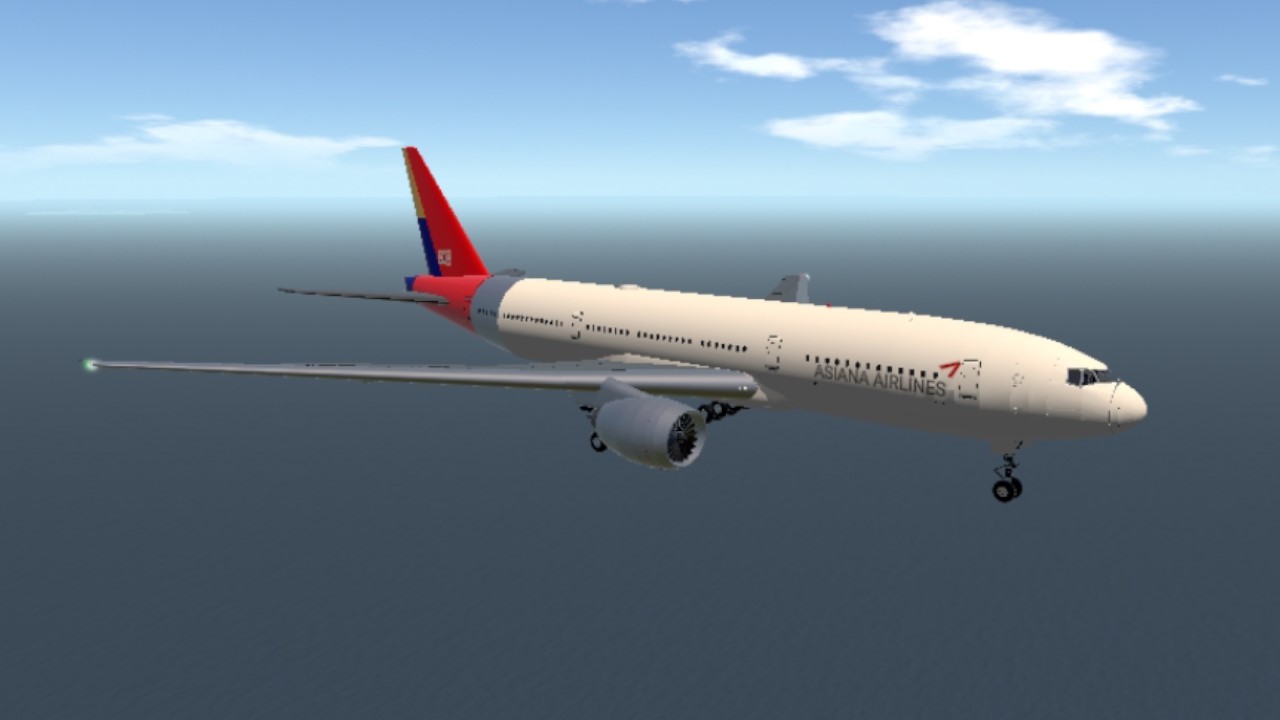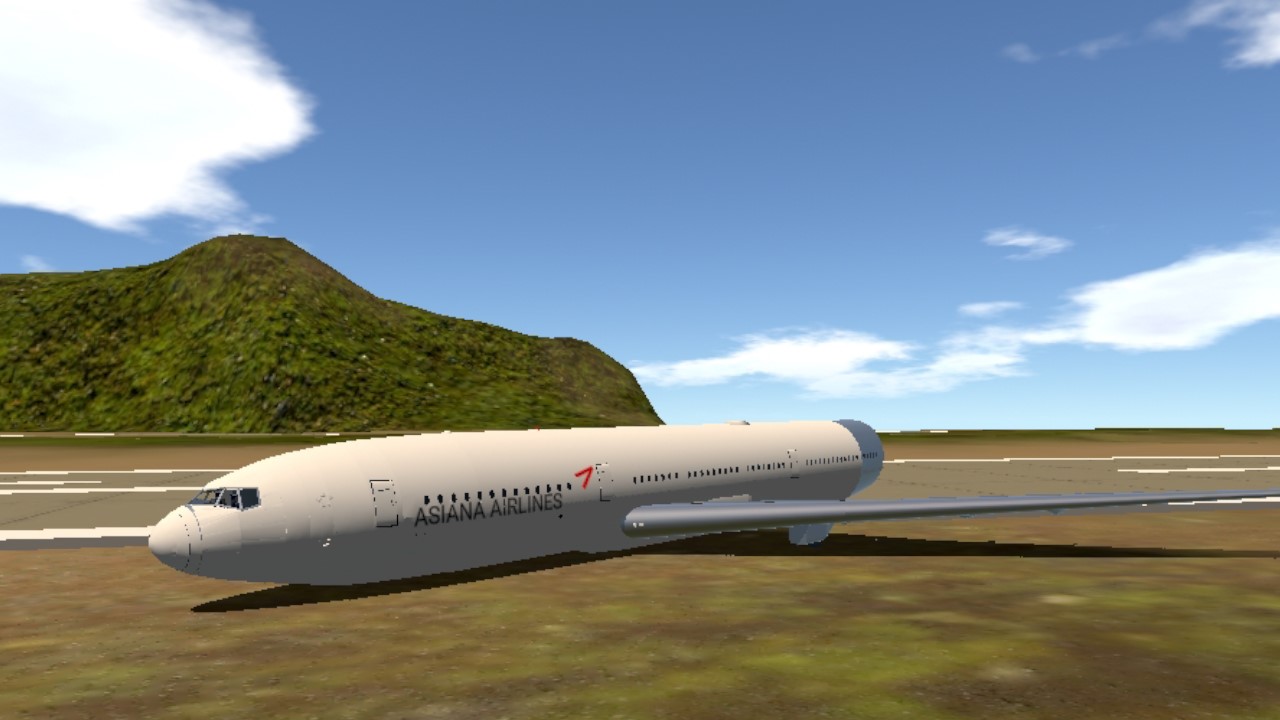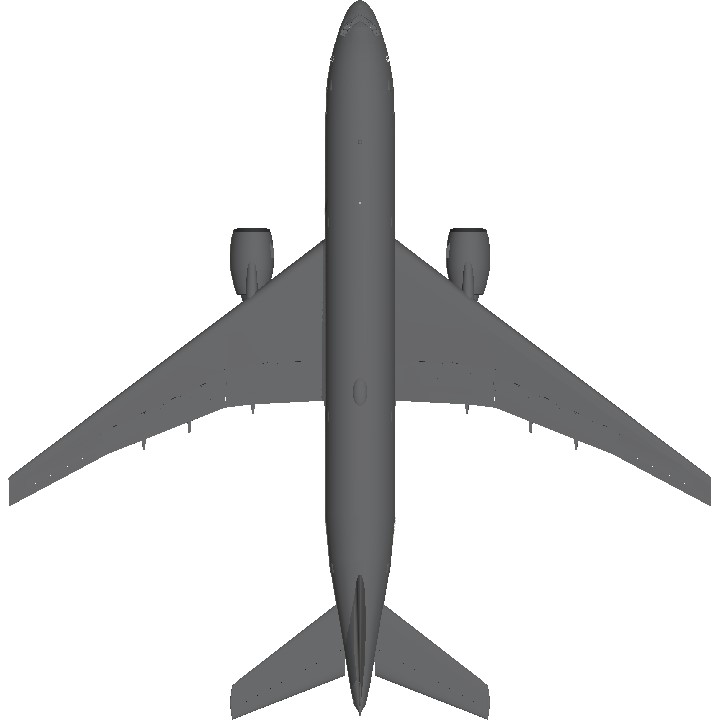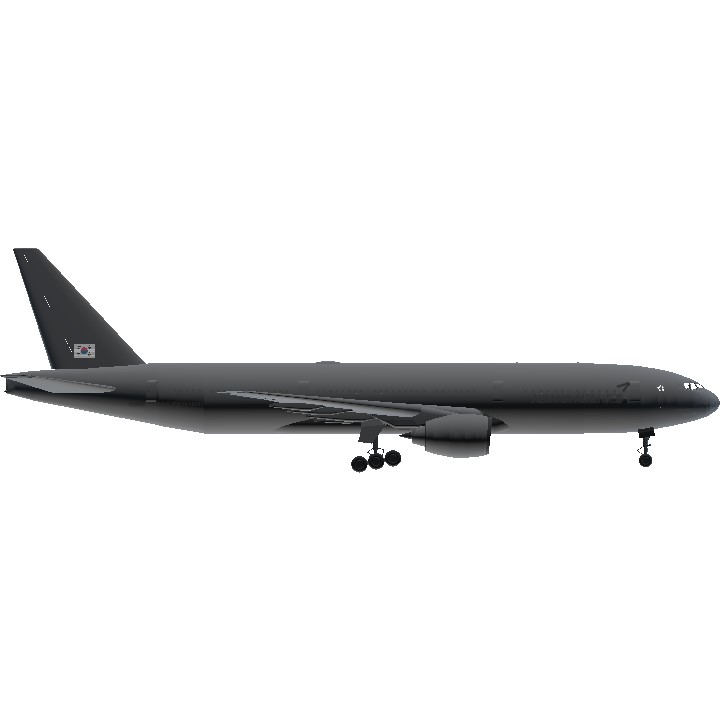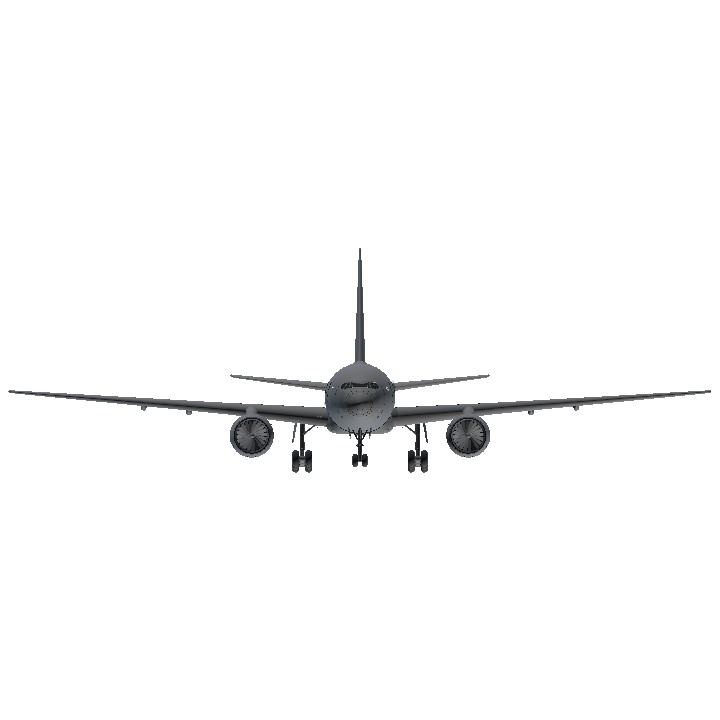Boeing 777
The Boeing 777, commonly referred to as the Triple Seven, is an American long-range wide-body airliner developed and manufactured by Boeing Commercial Airplanes. The 777 is the world's largest twinjet and the most-built wide-body airliner. The jetliner was designed to bridge the gap between Boeing's other wide body airplanes, the twin-engined 767 and quad-engined 747, and to replace aging DC-10 and L-1011 trijets. Developed in consultation with eight major airlines, the 777 program was launched in October 1990, with an order from United Airlines. The prototype aircraft rolled out in April 1994, and first flew in June of that year. The 777 entered service with the launch operator United Airlines in June 1995. Longer-range variants were launched in 2000, and first delivered in 2004.
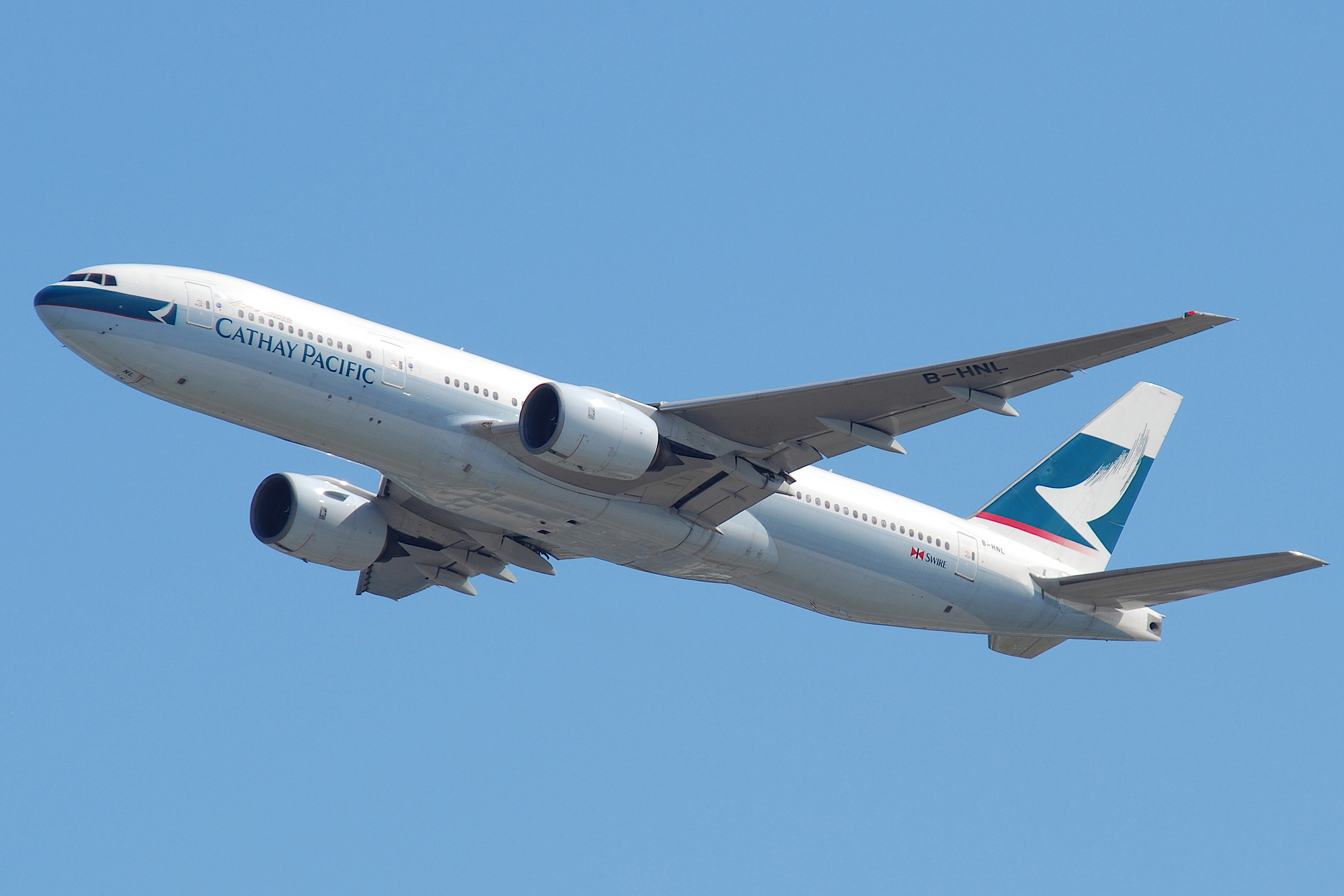
The first Boeing 777 built in July 2011 while operated by Cathay Pacific. The 777 is a low-wing twinjet; the original -200 is the shortest variant.
The 777 can accommodate a ten–abreast seating layout and has a typical 3-class capacity of 301 to 368 passengers, with a range of 5,240 to 8,555 nautical miles [nmi] (9,700 to 15,840 km; 6,030 to 9,840 mi). The jetliner is recognizable for its large-diameter turbofan engines, raked wingtips, six wheels on each main landing gear, fully circular fuselage cross-section, and a blade-shaped tail cone. The 777 became the first Boeing airliner to use fly-by-wire controls and to apply a carbon composite structure in the tailplanes.
The original 777 with a maximum takeoff weight (MTOW) of 545,000–660,000 lb (247–299 t) was produced in two fuselage lengths: the initial 777-200 was followed by the extended-range -200ER in 1997; and the 33.25 ft (10.13 m) longer 777-300 in 1998. These have since been known as 777 Classics and were powered by 77,200–98,000 lbf (343–436 kN) General Electric GE90, Pratt & Whitney PW4000, or Rolls-Royce Trent 800 engines. The extended-range 777-300ER, with a MTOW of 700,000–775,000 lb (318–352 t), entered service in 2004, the longer-range 777-200LR in 2006, and the 777F freighter in 2009. These second-generation 777 variants have extended raked wingtips and are powered exclusively by 110,000–115,300 lbf (489–513 kN) GE90 engines. In November 2013, Boeing announced the development of the third generation 777X -8 and -9 variants, both featuring composite wings with folding wingtips and General Electric GE9X engines.
As of 2018, Emirates was the largest operator with a fleet of 163 aircraft. As of September 2024, more than 60 customers have placed orders for 2,295 Triple Sevens across all variants, of which 1,738 have been delivered. This makes the 777 the best-selling wide-body airliner, while its best-selling variant is the 777-300ER with 837 aircraft ordered and 832 delivered. The airliner initially competed with the Airbus A340 and McDonnell Douglas MD-11; since 2015 it has mainly competed with the Airbus A350. First-generation 777-200 variants are to be supplanted by Boeing's 787 Dreamliner. As of May 2024, the 777 has been involved in 31 aviation accidents and incidents, including five hull loss accidents out of eight total hull losses with 542 fatalities including 3 ground casualties.
Asiana Airlines Flight 214
Asiana Airlines Flight 214 was a scheduled transpacific passenger flight originating from Incheon International Airport near Seoul, South Korea. On the morning of July 6, 2013, the Boeing 777-200ER operating the flight crashed on final approach into San Francisco International Airport in the United States. Of the 307 people on board, three died; another 187 were injured, 49 of them seriously. Among the seriously injured were four flight attendants who were thrown onto the runway while still strapped in their seats when the tail section broke off after striking the seawall short of the runway. It was the first fatal crash of a Boeing 777 since the aircraft type entered service in 1995.
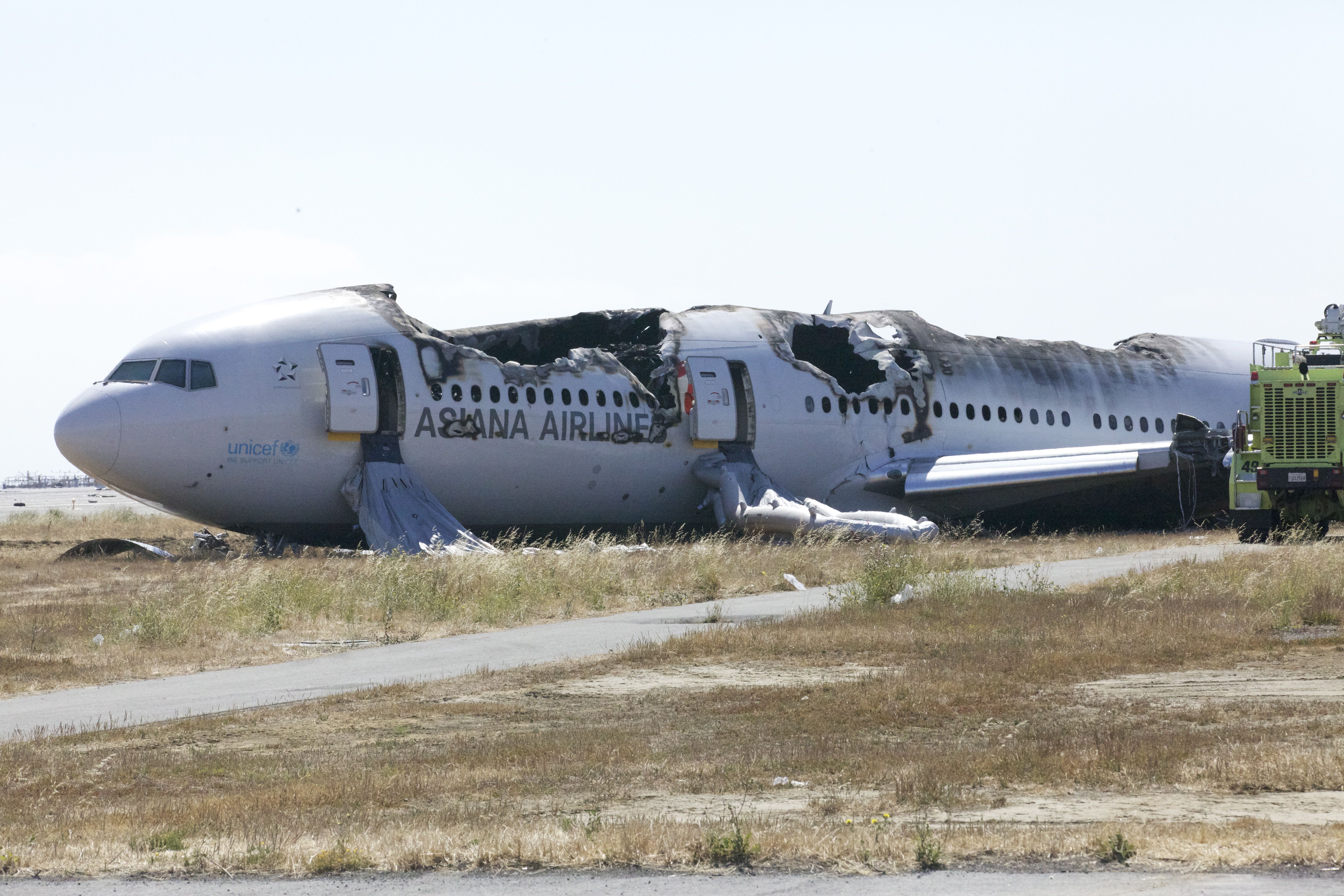
The wreckage of the Boeing 777 at San Francisco International Airport the day after the crash
The investigation by the U.S. National Transportation Safety Board (NTSB) concluded that the accident was caused by the flight crew's mismanagement of the airplane's final approach. Deficiencies in Boeing's documentation of complex flight control systems and in Asiana Airlines' pilot training were also cited as contributory factors.
Specifications
Spotlights
- VietnamAirlinesFlight474 6 months ago
General Characteristics
- Predecessor Boeing 777-200ER United Airlines
- Successors 2 airplane(s)
- Created On Android
- Wingspan 203.2ft (61.9m)
- Length 208.1ft (63.4m)
- Height 65.0ft (19.8m)
- Empty Weight 302,129lbs (137,043kg)
- Loaded Weight 595,355lbs (270,049kg)
Performance
- Power/Weight Ratio 0.464
- Wing Loading 61.9lbs/ft2 (302.4kg/m2)
- Wing Area 9,613.4ft2 (893.1m2)
- Drag Points 59812
Parts
- Number of Parts 937
- Control Surfaces 5
- Performance Cost 4,140

